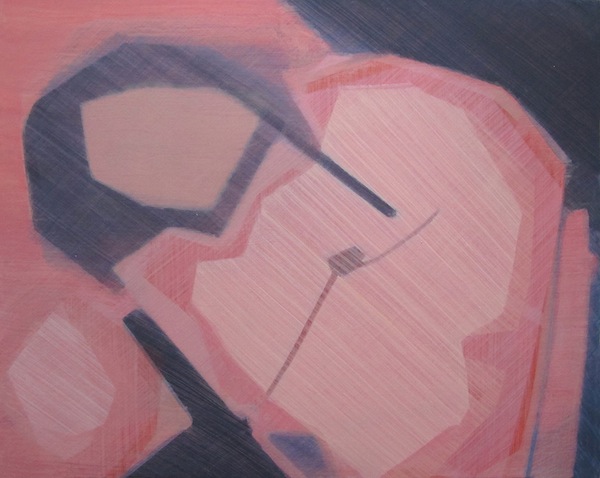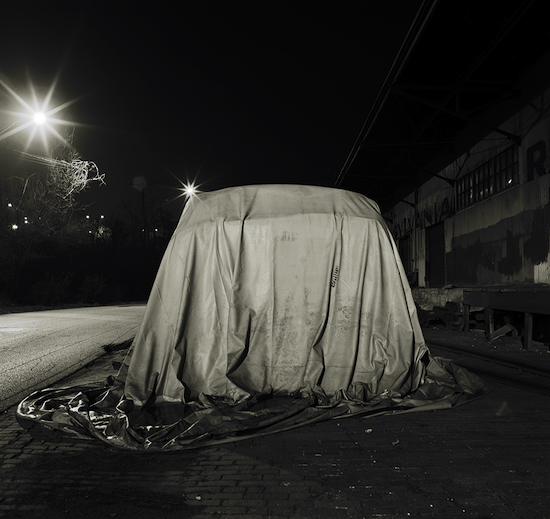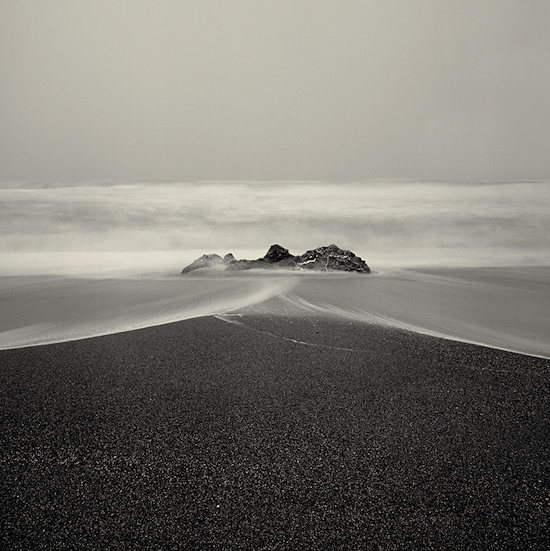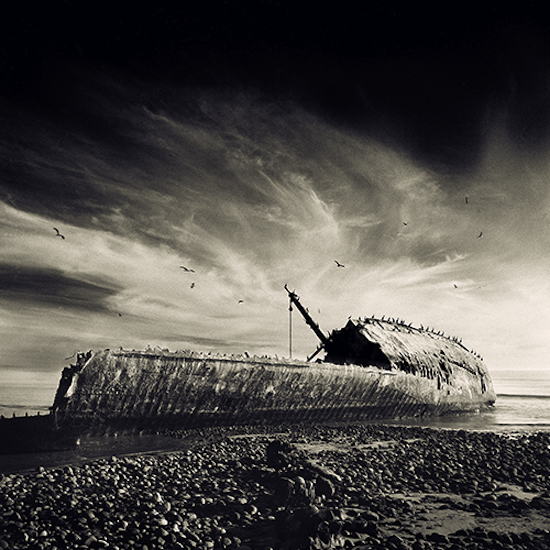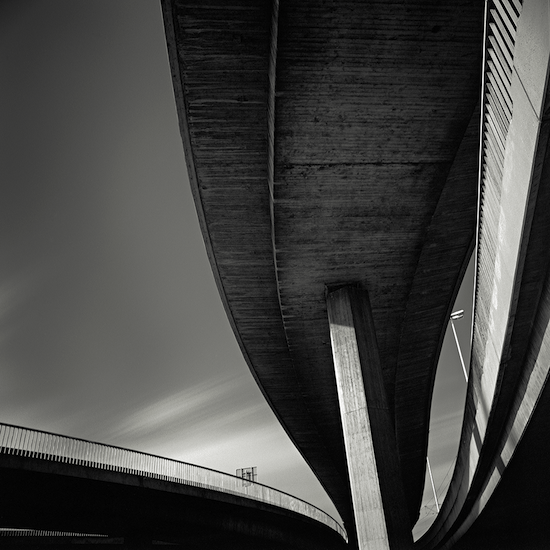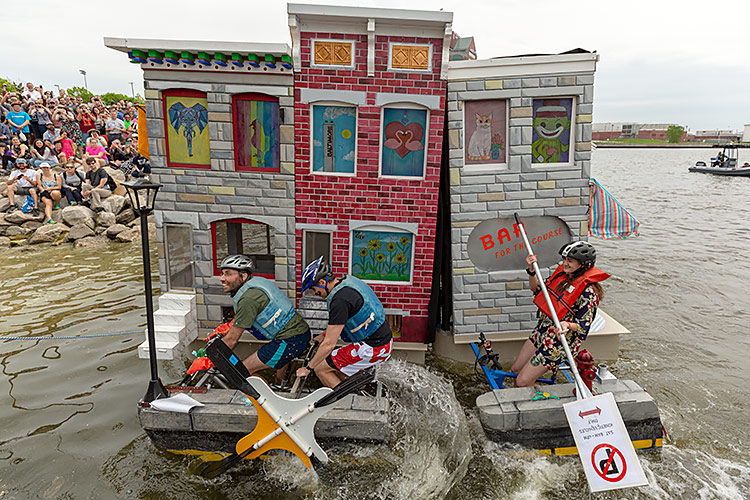Perry Manuk is a photographer originally from Santa Barbara, California. He studied at Brooks Institute of Photography from 2002 to 2005 where he won the First Prize Portfolio Award in photography from PIEA, and earned a BFA. Manuk completed his MFA at Maryland Institute of College of Art, where he was awarded a Graduate Merit Fellowship.
Manuk’s solo exhibition “Landmarked” is currently up at Die Botschaft gallery in Bolton Hill through November 25, 2013. He just returned from Germany and agreed to a few questions about his process and new exhibit.
Cara Ober: What work will you be showing at Die Botschaft? How long will your show be up?
Perry Manuk: I’m showing a selection from several different bodies of my work from over the last decade. It was really interesting, looking for an underlying theme between all of my images. This really made me whittle each individual image down to its very base. The title of “Landmarked” reflects some of what I found basic meaning in the majority of my work: Viewing interactions between people and place in their shaping of environment.
CO: After looking at the work on your site, and at MICA in your thesis show, I was struck by the dramatic, high contrast black and white drama of each image, which, at the same time, contain subtle, sharp tiny details. They’re gorgeous. How do you get such a high contrast effect without it being grainy? Do you work digitally or with film?
PM: I shoot with film because I like the starting point it gives me much better than digital in terms of its clarity, grain structure, and exposure latitudes. As for the contrast I control it with the exposure and processes via the zone system. Then I further manipulate with photoshop because I like the liberty that I have there verses the Darkroom, especially with edge sharpness and localized contrast manipulations. I think it’s my combination of these manipulations that give them the more high contrast effect without being grainy.
CO: What kind of camera, film, filters, and printing processes do you use?
PM: I shoot 99% of my images with a Hasselblad 501C/M either with my 50mm or 80mm lens, occasionally with my 120mm. As for film it’s almost always Fuji Acros 100, however sometimes I’ll use Delta 400 or 3200 if I want something faster. I keep an assortment of filters for shooting from a basic red25 filter to a 13 Stop Neutral Density filter. Up until recently I still printed everything in the darkroom. However with this most recent body of work I’ve moved into a digital printing workflow printing on Fuji’s version of a CibaChrome and then do a Diasec mount.
CO: I read that you are originally from Santa Barbara, California. When and why did you move to Baltimore? How does it compare, in your opinion?
PM: I had never even considered it a location. I knew I wanted to get out of Santa Barbara and even California for a while and wanted something different. So after I graduated from college I went traveling. I spent some time in Toronto with friends, then New York, Rome, and Budapest. After all of that I landed myself in DC. Which at first was really great … So many things that I only knew from images that I got to see in person all in one place. But after that wore off I quickly decided it wasn’t the city for me.
Looking at what was nearby, I was considering trying Richmond or Baltimore but after visiting each decided it was Baltimore hands down. Santa Barbara is a great place to be when you’re older and settled in the world. And I may end up back there someday. Baltimore, instead, is a great place to be creative. The way I always tried to describe it to friends is that it’s what I would have imagined NYC to be like in the 50s. In times when it still hadn’t become so expensive but attracted a lot of people who were interested in living in a large and inexpensive city, including a lot of artists.
CO: Although you have one portfolio of striking figure studies and portraits, the rest of your work depicts the landscape. Some of it is a natural landscape while others are constructed. And many seem to explore the transition between natural and manmade landscapes. Even the portraits are shot outside in textured, dramatic landscapes. So – what is it about the landscape that attracts you and keeps you inspired?
PM: I think its constant presence and the immense amount of information it holds. I can’t even imagine how I could get away from it if I wanted to. One big attraction to photography for me is the facilitation of processing this constant. I really like how rooted in interaction with the real world photography is. How its mechanisms allow for examinations and interpretations of things in a very real and tangible way but at the same time equally distorted.
CO: Who are your favorite photographers and why?
PM: I like a lot of what would be called the traditional photographers of my black and white genre. Ansel Adams, Eugene Smith, Walker Evans, Eddie Adams, Paul Caponigro, Irving Penn to name a few of them. It’s the notion of photographic evidence as truth of something that I really like in the work of Eugene Smith and Eddie Adams and where I find most of my enjoyment of more contemporary works of photography.
CO: What question do you hate to be asked at an art opening?
PM: “Is it Photoshop?” I don’t mind a lot of the implications in this question so much as I do its questioning the realness of the photograph: There are multiple ways of using Photoshop as a tool. Some of them bring the picture closer to reality others manipulate the picture in a way that put it farther away from real world conditions.
I use Photoshop to manipulate qualities of the image that your eye interoperates as contrast while leaving some other areas untouched to save some softer tonalities as well. I will also remove things that are distracting to my focus in the picture, like a power pole or maybe street sign. During the process of taking the picture, though, I also use long exposures to remove people, cars and other mobile objects. I use Photoshop in addition to the process of taking the picture and I use it in the same way I use photography in general: I direct the attention of the viewers to what I want them to see.
It’s the underlying part of “Is it Photoshop?” that is really the subtle part of the question that makes it difficult to answer which is “Is it real?” Replying to that question means first defining what is real and what is not, which due to time and space restrictions is often difficult. If you want to sit down over a bottle (or perhaps several) of wine and have that discussion I’m always interested in getting new perspective in exchange for sharing my own. But its just a seemingly simple question that is in reality multilayered and loaded with pretense that can’t really be hammered out in a minute or two
However it’s this definition of real in photography and other areas as well that has really captured my interest. It is starting the much deeper debate about art and reality. It is this debate about the definition of real photography and other areas that has really captured my interest. My contribution to this debate is incorporated into my work.
* Author Cara Ober is the Editor at Bmoreart and a former photography teacher. Darkroom’s where it’s at!
